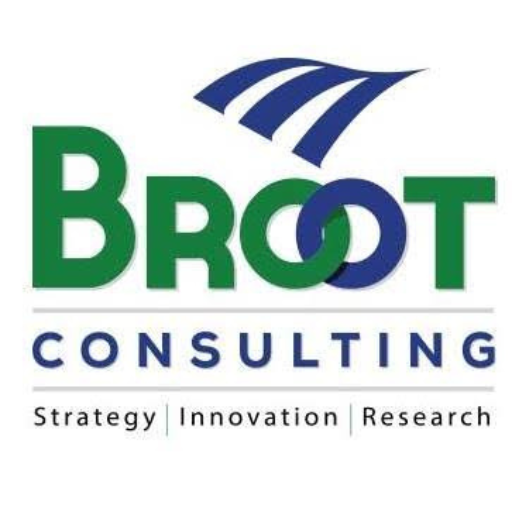CAN DESIGN THINKING REALLY SOLVE COMPLEX PROBLEMS?
Problem-solving skills are necessary to thrive in today’s era of complexity and uncertainties. While many competencies have been identified by various organizations, including the World Economic Forum, central to most of these competencies is the ability to solve complex problems. Therefore, Complex problems remain one of the significant challenges that leaders face today. In an unpredictable and volatile world, leaders must future-proof their organizations and create value for their stakeholders. But what are complex problems? How do they affect leadership success stories’ capabilities, and how can they be solved effectively?
Complex problems have multiple interrelated factors, unknowns, and uncertainties. They are hard to define and even harder to predict. They are not like puzzles that can be solved with more information or rules. They are more like raising a child, where the same input can lead to different outcomes in a child’s life. No parent is a master at predicting what the children will become or how they will behave.
Design thinking has been put forward as a tool for solving complex problems; how easy or accurate is this postulation? To answer this question, let us begin with a short description of the design thinking methodology.
Design thinking is a creative, use-focused, and systemic way of problem-solving. It involves empathizing with the users, understanding the pain point, defining the problem from user perspectives, ideating possible solutions, and prototyping and testing them. Using a learning-by-doing approach, design thinking facilitates experimentation, constant learning and rapid adaption. With its capabilities, there is no doubt that design thinking can help its adopters generate innovative and viable solutions that meet the needs and expectations of their customers.
This article will share our insights and experiences as Senior Innovation and Human-Centred Design Consultants. We have facilitated and implemented design thinking projects for over five years, serving clients in diverse sectors such as oil and gas, finance, telcos, technology, FMCG, and public institutions. We will evaluate how design thinking can help organizations solve complex problems and achieve their goals.
A Complex Problem of Organizational Change.
The recurring question in this article remains: can design thinking help solve complex problems? With our knowledge of consulting for organizations using Human-centered Design. We can reasonably conclude that Design Thinking is not a magic wand that can solve complex problems in a short time. We also believe that solving complex problems requires more than Design Thinking. However, design thinking should be the overarching and complementary methodology in tackling complex issues.
Complex problems have multiple dimensions, interdependencies, uncertainties, and stakeholders; resolving one problem could create other ones. Complex problems are often dynamic, evolving, and unpredictable. They also resist simple solutions, which may have unintended consequences or trade-offs. Examples of complex problems include conflicts of diverse nature, poverty, social issues, environmental challenges, and organizational changes.
As we interacted with some design thinking practitioners, we observed some high exuberance that makes some Design Thinking facilitators underestimate and oversimplify complex problems. They have a narrow understanding of both design thinking and complex problems; therefore, in the excitement to impress their clients, they overpromise the solutions, forgetting that Design Thinking is not about putting up a fancy workshop with sleek Design, sticky notes, sharpies and the fun approach to concept development. The three- or four-day workshop is a good start in developing a good idea. Design Thinking is about the people; that is why design thinking wins and is a valuable tool in solving complex problems.
Design thinking is a problem-solving methodology that applies design principles to various domains. As a design consultant, Ralph Caplan said, “Thinking about design is hard, but not thinking about it can be disastrous”. Design thinking differs from the traditional scientific, more linear and structured approach. Design thinking is more flexible and iterative, emphasizing empathy and creativity in finding solutions. It is more adaptable than rigid.
Design thinking uses a designer’s mindset to tackle problems that may not be directly related to Design. For example, engineering and architecture are expected to be design-oriented fields, but design thinking can also be used to address problems in other areas that are not design-specific. Design thinking is a human-centred approach that aims to create solutions that suit the needs and goals of the people or organizations involved. The Process consists of five steps:
- Empathize: Observe and interact with the users to understand their situation
- Define: Frame the problem clearly and concisely
- Ideate: Generate as many ideas as possible without judgment
- Prototype: Build a low-fidelity version of the solution
- Test: Evaluate the solution with the users and collect feedback
Design thinking is centred around deeply engaging with individuals to gain a genuine understanding of their circumstances. Numerous questions are posed through this engagement, with the answers providing increased clarity. Insights and patterns emerge from these answers, forming the foundation for a distinct perspective. This perspective then guides the development of tailored solutions. Within design thinking, the emphasis is always on considering the needs and goals of the people or organizations we aim to assist.
The ideation phase is a period of unrestrained brainstorming where all ideas are welcome. This phase is dedicated to exploring every possible concept, allowing creativity to flourish. Ideas spark continuously until the breakthrough concept emerges and is brought to life.
Design thinking stands out as a collaborative methodology that addresses the fundamental causes of issues, ensuring inclusivity throughout the Process. The prototyping phase is crucial for materializing concepts and making ideas tangible to gather meaningful feedback. For instance, presenting a prototype allows for constructive input and potential idea refinement based on real-world interactions. During this phase, teams have the opportunity to present their concepts, facilitating the discovery of shared solutions among different prototyping groups. Subsequent testing is vital to evaluate how the intended audience responds to the proposed solutions. Depending on the feedback from testing, the Process may advance or necessitate a return to previous stages for further adjustments.
Adopting design thinking is essential for any organization to enhance productivity and achieve its business objectives. However, this necessitates a fundamental shift in mindset. A willingness to engage openly with all stakeholders to gain a deep understanding of various situations is crucial. This approach begins with an unbiased mindset, which is key to success.
To truly integrate design thinking, it’s important to be mindful and intentional in our actions. Teams should begin by actively incorporating these principles into their daily tasks. As part of this process, feedback becomes a critical component of team dynamics, alongside continuous testing and iteration. This shift in mindset fosters an environment where failure is accepted and celebrated as a valuable learning opportunity. By embracing design thinking, teams position themselves to meet their goals effectively because:
- It is a creative approach to problem-solving
- It is an open-ended method for scaling difficult situations and circumstances
- It puts the user at the centre. In other words, it is human-centric. It is an approach that begins with the end in mind
- It is an inclusive approach.
- Unlike the scientific approach, design thinking is not structured and is based on analytics to proffer solutions. It involves storytelling.
- Design thinking can generate new ideas and opportunities. It drives innovation.
Consider facing a challenge within your organization or concerning a new product or service, and you’re seeking to devise a solution. A scientific method involves collecting data, analyzing this data, making inferences, leveraging past experiences, and observing patterns and trends to inform decision-making. This methodology contrasts design thinking principles, prioritizing a human-centred, inclusive, creative, and open-ended approach.
Oversimplification of Design Thinking Capabilities
There have been many schools of thought regarding the effectiveness of design thinking as an effective tool for solving complex problems. There are extremes: those who believe design thinking is a fad and those who see it as a magic wand; some of the major criticisms of design thinking include:
- Over-simplification and adoption of a linear approach in tackling complex and dynamic problems that require a systematic and holistic approach
- Too many users or customers are focused at the expense of other stakeholders.
- It has also been said that design thinking is too optimistic and idealistic without paying critical attention to realities
- Finally, some critics believe the methodology is subjective, biased, and relies only on intuition.
All the points listed above against design Thinking are what design thinking stands against. Design Thinking is not a linear process, hence strong emphasis on iterations; design thinking is not lopsided, with only bias toward users; design thinking ensures precise mapping and understanding of all stakeholders, using stakeholder value network to balance the interest and influence of each stakeholder.
Poor understanding and execution of design thinking projects is a primary reason for most of the misinformation about the effectiveness of design thinking. Therefore, we disagree with practitioners who think the best way to promote design thinking is by promising clients that they can address complex organizational problems in a four-day workshop. This approach is misleading and disrespectful to the true meaning of complex problem-solving. The research work of Herbert A. Simon, an American political scientist and Nobel laureate, in his book Administrative Behavior: A Study of Decision-Making Processes in Administrative Organizations, published in 1957, gives an excellent insight into understanding complex problems, he said
“The capacity of the human mind for formulating and solving complex problems is very small compared with the size of the problem whose solution is required for objectively rational behaviour in the real world or even for a reasonable approximation to such objective rationality.”
Complex problems require a deeper understanding of the causes, a broader perspective of the system, a longer-term vision of the impact, and a collaborative effort of the stakeholders. They also require a willingness to experiment, learn, and adapt, as there is no one right answer or final solution. Design thinking helps generate insights and ideas but is insufficient to implement and sustain them.
We experienced this first-hand when we facilitated a strategy session for one of our clients in the oil and gas sector. A head of the department was concerned about how to align his employees with the organization’s vision. However, the employees were not on the same page and often engaged in nefarious activities that undermined the shared vision. The general manager was interested in getting insights that could help resolve the situation. The problem at hand is that of a misaligned culture. It requires a shift. We believe that organizational culture transformation is a complex problem that can only be solved through a human-centric lens. `there are no quick fixes to the problem, which we liken to raising a child in a family, even when they are raised the same way, with the same resources and system, what each child will turn out to behave and achieve differently.
Deploying a design thinking methodology to address complex problems such as the one highlighted above will work only with the broader context of a more comprehensive system, the long-term impact, and the involvement of other stakeholders. Design thinking is a valuable and versatile approach to problem-solving, but it is not the sole panacea for complex problems. Complex problems require more than just design thinking. They need a systemic, adaptive, and collaborative mindset that respects the complexity and uncertainty of the problem
How Design Thinking Strengthens Complex Problem Solving
One of the quotes we have used extensively in justifying the adoption of design thinking is Albert Einstein’s quote: “We cannot solve our problems with the same level of thinking that created them.
Design thinking works because it allows us to see the problem from the perspective of those affected and use empathy to gain deeper insights into their emotions, pain points and aspirations. The power of design thinking can be found in the following aspects:
- Human-Centeredness: Design thinking puts humans at the centre of the discussion and considers their abilities and experiences in crafting innovative solutions that suit their needs. Human-centred Design is helpful because it creates emotional ties with the people we serve and generates efficient products and solutions that meet real-world needs.
- Problem Discovery, Definition and Understanding: Design thinking uses the double diamond framework to separate the problem from the solution space. It emphasizes proper problem discovery and definition, which is essential for solving complex problems.
- Focus on the Problem: Design thinking helps us focus on the problem by following a systematic and user-centric process that properly understands the needs, desires, and challenges of the people we are designing with. By empathizing with the users, defining the problem from their perspective, ideating possible solutions, and prototyping and testing them, we can avoid jumping to conclusions or making assumptions that might not be valid or relevant.
- Rapport and Collaboration: Design thinking fosters rapport and collaboration among different stakeholders’ perspectives. Design thinkers can gain deeper insights, challenge assumptions, and generate diverse ideas by working with users, clients, experts, and peers.
- Tolerance for Ambiguity: Design thinking helps us develop tolerance for ambiguity by exposing us to different kinds of uncertainty and complexity inherent in the design process. Ambiguity can arise from various sources, such as unclear or conflicting user needs, multiple or changing design criteria, incomplete or contradictory information, or novel and unfamiliar situations. Design thinking encourages us to embrace ambiguity as an opportunity to explore, experiment, and learn rather than as a problem to avoid or solve.
- Iterative Process: it is a wrong assumption to associate Design thinking with a linear process. The beauty of design thinking is in challenging the user to iterate until the solutions resonate well with your customers. The Process allows for the refinement of solutions through continuous feedback and testing. Solving complex problems requires constant feedback and text
Conclusion
This article asked whether Design Thinking can help solve complex problems. We affirm that Design Thinking can simplify a complex problem by understanding the users well. A simplified problem is easier to solve so Design Thinking can provide an optimal solution.
Most complex problems involve people, and putting them at the centre of the problem helps to earn their trust and engage their talents and cooperation in solving the problem. This is the key advantage of Design thinking over other approaches. Other methods can enhance the implementation of the solution. For instance, integrating Design Thinking with Agile, System Thinking, and Change Management can be a potent tool for comprehending the problem, eliminating a silo mindset, developing an agile system to facilitate execution, and establishing a practical framework that guides people to a preferred future state through the change management process.
Written by:
Olukunle A. Iyanda, PhD, FCA, SNFLI.
Gbemi Ibrahim, PMP, GPHR, MCIPM.






